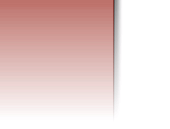NEW! from Eric Martz, U Mass Amherst USA :RasMol
email list to facilitate announcements of new releases, and general
discussion of RasMol and its applications.
To SUBSCRIBE send an email message to this address:
listproc@lists.umass.edu
The body of the message must contain this one line:
subscribe rasmol 'yourname'
Molecular Graphics Visualisation tool
(Excerpt of the Program Announcement from USENET)
Roger Sayle
Biocomputing Research Unit,
University of Edinburgh
October 1993
This posting is to announce the public release of RasMol 2.2 molecular
graphics visualisation program. This package has been developed in the
BRU over the last few years, and the latest version has a significant
number of improvements over RasMol 2.1. These enhancements include protein
ribbon diagrams, secondary structure assignment (based on Kabsch and
Sander's DSSP algorithm), better amino acid classification, DNA hydrogen
bonding, DNA backbone representations, stick representations of hydrogen
bonds and disulphide bridges (either between backbone or sidechains), the
ability to write out selected atoms to a PDB file, support for Alchemy
format files, colouring of hbonds by their type, compressed PostScript
output, extended atom expression syntax, increased scroll bar functionality,
and many more additions (and bug fixes) too numerous to mention. For a
complete list of modifications (and acknowledgements), refer to the
distribution ChangeLog.
RasMol is an X Window System tool intended for the visualisation of
proteins and nucleic acids. It reads Brookhaven Protein Databank (PDB)
files and interactively renders them in a variety of formats on either an
8bit or 24/32bit colour display. The complete source code and user
documentation for both the UNIX/X11 version and the IBM PC/MS Windows 3.1
version may be obtained by anonymous ftp from ftp.dcs.ed.ac.uk
[129.215.160.5] in the directory /pub/rasmol. The UNIX/X11 source code is
contained in the file RasMol2.tar.Z and the MS Windows source code and
executable in the file raswin.zip. Both of these files include a slightly
dated version of the PostScript user reference manual.
The program is intended for teaching and generating publication
quality images. The program has both a menu system and a full featured
command line interface. Different parts and representations of the
molecule may be coloured or displayed in a number of formats independently.
Currently supported formats include wireframe, ball and stick, backbone,
space filling spheres and protein ribbon models. The space filling spheres
may even be shadowed. The molecule may be manipulated using scroll bars,
the interactive command line or from a dials box if attached. The resulting
image may be saved at any point in PostScript, GIF, PPM, Sun rasterfile or
Microsoft BMP formats. For more details see the RasMol user reference.
It was claimed at a recent conference to be the fastest available
uniprocessor program for drawing shadowed spacefilled molecules. On a
SparcStation it can shadow a 10,000 atom protein in less than 10 seconds.
The current version of the program has been tested on sun3, sun4, sun386i,
hp9000, sequent, DEC alpha, IBM RS/6000 and SGI, DEC and E&S mips based
machines compiled under both gcc and the native compiler. The version for
Microsoft Windows requires version 7 of the Microsoft Optimizing C Compiler
and the Microsoft Software Development Kit (SDK).
The source code is public domain and freely distributable provided that
the original author is suitably acknowledged. Any comments, suggestions or
questions about the package may be directed to "rasmol@dcs.ed.ac.uk".
--
Roger Sayle
Department of Computer Science
University of Edinburgh
Edinburgh EH9 3JZ, UK.
JANET: ros@uk.ac.ed.dcs
UUCP: ..!mcsun!uknet!dcs!ros
ARPA:
ros%dcs.ed.ac.uk@nsfnet-relay.ac.uk
Tel: (+44) 031 650 5163 (direct line)
Note from the WWW maintainer:
Please let me know by emailing me at www@bioinformatics.bocklabs.wisc.edu
if there are other WWW pages relating to RasMol, so that I can
add a link to them. Thanks!
 Go to the
top page
Go to the
top page
 Go up to the
Scientific Visualization at the IMV page
Go up to the
Scientific Visualization at the IMV page
Content: ©1994-1997 Stephan Spencer &
Jean-Yves Sgro
Design: ©1997
Internet Concepts, LLC
Web Design by


